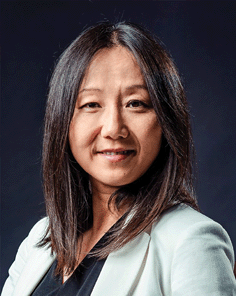Editorial for the special issue of Materials Horizons in honor of Seth Marder
Jean-Luc
Brédas
 *a,
Zhenan
Bao
*a,
Zhenan
Bao
 b,
Thuc-Quyen
Nguyen
b,
Thuc-Quyen
Nguyen
 c and
Mark E.
Thompson
c and
Mark E.
Thompson
 d
d
aDepartment of Chemistry and Biochemistry, The University of Arizona, Tucson, Arizona 85721-0088. E-mail: jlbredas@arizona.edu
bDepartment of Chemical Engineering, Stanford University, Stanford, California 94305
cCenter for Polymers and Organic Solids, Department of Chemistry & Biochemistry, University of California at Santa Barbara, Santa Barbara, California 93106-9510
dDepartment of Chemistry, University of Southern California, Los Angeles, California 90089
 Jean-Luc Brédas |
 Zhenan Bao |
 Thuc-Quyen Nguyen |
 Mark E. Thompson |
In this special issue of Materials Horizons, we celebrate Professor Seth Marder's 60th Birthday, his impact on materials science and his long-time commitment to diversity, education, and the materials science community.
For three decades, Seth has been a leading international figure in the fields of organic photonics and electronics, a testimony to his exceptional ability to understand in-depth all facets of a problem. His grasp of basic concepts and theory, synthetic and materials aspects, as well as device constraints, has allowed him to creatively design and synthesize organic molecules, oligomers, and/or polymers that are best tooled to deliver the desired properties. This creativity has led to well over 550 papers and 40 issued patents, many of which have been licensed. Seth has a tremendous ability to think through how changes in molecular structure lead to changes in electronic structure and, ultimately, to the properties and performance of the materials. His most important accomplishments include the development of organic and organometallic second-order nonlinear optical materials for electro-optic and photorefractive applications, the development of third-order nonlinear optical organic materials, including phthalocyanines for optical limiting, and cyanines and squaraines for all-optical signal processing, the development of new generations of organic chromophores with unprecedented two-photon absorption cross-sections and their exploitation in applications including micro- and nano-fabrication, optical data storage, and bioimaging, the development of surface modifiers to compatibilize oxide electrodes or nanoparticles with organic overlayers and fine tune interfacial properties (e.g., electrode work function), the optimization of new organic hole-transport materials and emitters, the development of a hybrid polymer/small molecule approach for organic light-emitting diodes for displays and solid-state lighting, the development of a novel scanning-probe based lithographic process—thermochemical nanolithography—and the associated organic and polymer chemistry, and, more recently, the synthesis and application of new generations of air-stable p-type and n-type dopants for organic semiconductors.
Among all of Seth's accomplishments, one that is especially illustrative of his way of thinking and working is his comprehensive rationalization of the nonlinear optical processes in organic molecules and materials, which led to a unified description of linear and nonlinear polarization in these systems. Prior to Seth's insight, the common wisdom was that the best way to boost the second-order nonlinear optical response (β) of organic chromophores was to use the strongest possible donor and/or acceptor functionalities, and that second-order and third-order (γ) responses could be largely optimized in an independent manner. Seth demonstrated both experimentally and theoretically the relationships linking molecular polarizabilities at various orders (for instance, he underlined that β vanishes for structures where γ has its highest value) and demonstrated an approach for maximizing a given nonlinear optical response. This work has had a tremendous impact on the field and has resulted in the design of compounds with unprecedented β and γ values. Its impact is such that it can be safely stated that organic nonlinear optics can be classified into a pre-Marder era and a Marder era.
In what is another critical facet of his work, Seth has been tireless in his commitment to diversity. He has consistently mentored and advocated for young female and underrepresented faculty. As an organizer or member of program committees for local, national, or international conferences, Seth has unfailingly invited speakers that truly represent the diversity of the scientific community and the broader community in general. Also, in all the scientific journals with which he has been associated, he has worked to ensure that they seek more equitable representation and nominate women and underrepresented minorities in their editorial and advisory boards.
Finally, it is especially relevant in the context of this special issue to recall that Seth was a major driving force behind the creation of Materials Horizons, for which he was named founding Chair of the Editorial Board in 2014. Under his leadership, Materials Horizons has become the Royal Society of Chemistry's flagship materials journal. Seth largely shaped the journal's innovative format and established its strong educational perspective. He also launched a community board comprised of senior graduate students and postdocs to make sure that the next generation of scientists has a voice in the shaping of the journal.
We sincerely thank Seth for all his contributions to materials science, diversity, education, and the scientific community and (belatedly) wish him the very best at the occasion of his 60th birthday!
| This journal is © The Royal Society of Chemistry 2022 |
